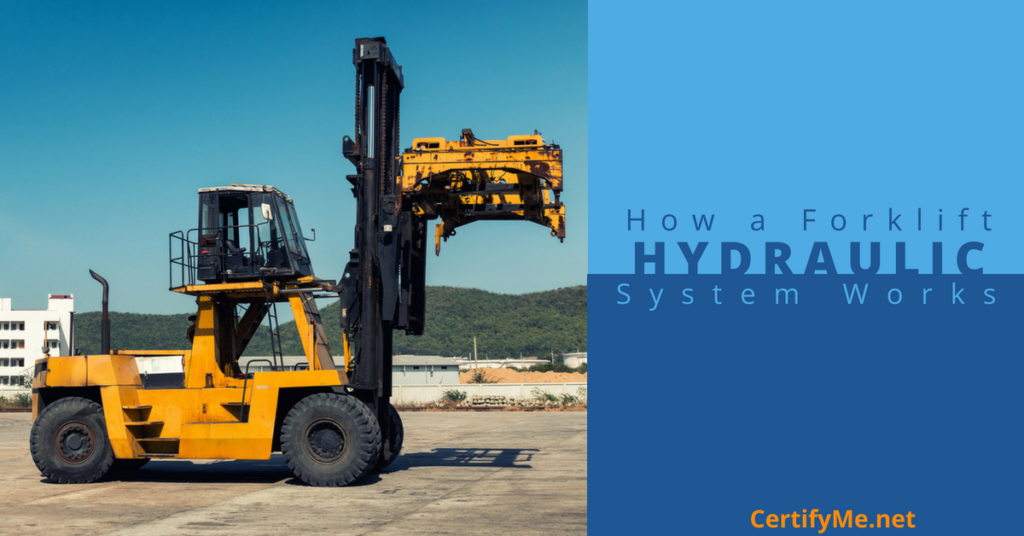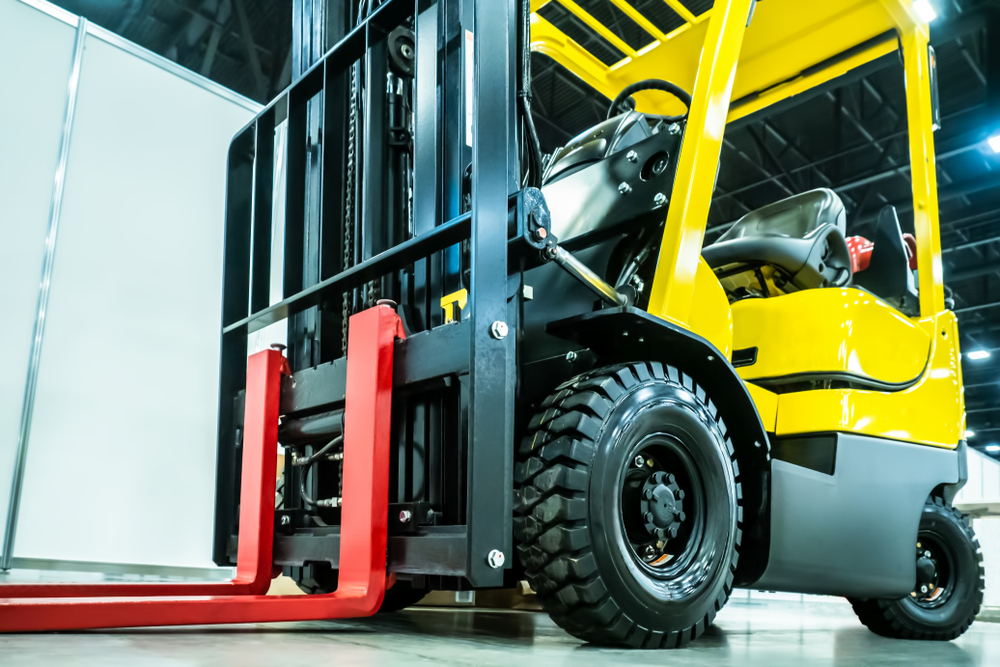How a Forklift Hydraulic System Works: Key Components and Safety Guidelines
Posted by: admin on March 21, 2025

The forklift hydraulic system is not just a component, but the backbone of lifting, tilting, and steering operations, making it indispensable for efficient material handling. Hydraulic pressure powers these functions, preventing equipment failures that could lead to workplace hazards. Ensuring proper training and compliance with OSHA regulations is vital for safety. Operators can obtain their required forklift certification to remain compliant and proficient in hydraulic system operation.
Understanding Forklift Hydraulic Systems
Hydraulic power enables forklifts to lift and transport heavy loads with minimal effort. A hydraulic forklift relies on fluid pressure to generate the force needed for these movements. The system includes a tank that stores hydraulic fluid, a pump that generates pressure, and various valves and cylinders that control movement. The seamless integration of these components ensures that forklifts operate with precision and stability, instilling confidence in their performance.
Essential Hydraulic Components and Their Functions
Each component of the forklift hydraulic system plays a crucial role in its operation:
- Hydraulic Pump: Generates continuous fluid flow to power lifting mechanisms.
- Valves: Control the direction and flow of hydraulic fluid.
- Hydraulic Cylinders: Convert hydraulic pressure into mechanical force, lifting the forks.
- Return Line: Directs fluid back to the reservoir for recirculation.
Understanding these parts empowers operators to ensure proper maintenance and troubleshooting, reducing downtime and enhancing performance. It’s not just about operating the forklift, but about being a crucial part of its upkeep and efficiency.

The Mechanics Behind Forklift Hydraulics
The lifting process begins when hydraulic fluid is pressurized and directed into the lifting cylinder. This pressure forces the piston inside the cylinder to move, raising the forks. How forklift hydraulics work is based on Pascal’s Law, which states that confined fluid transmits pressure evenly in all directions. When the operator releases hydraulic pressure, the forks lower smoothly, ensuring controlled movement and safety.
Troubleshooting and Maintaining Hydraulic Systems
To maintain optimal performance, addressing potential forklift hydraulic pressure issues is essential. Common problems include:
- Hydraulic Leaks: Damaged hoses or seals can cause fluid loss, affecting pressure.
- Slow Lifting Performance: Low hydraulic fluid levels reduce system efficiency.
- Clogged Filters: Dirty hydraulic filters can restrict fluid flow, leading to operational delays.
Regular inspections and scheduled maintenance help prevent breakdowns, ensuring the hydraulic system operates efficiently.

Hydraulic System Safety and Best Practices
Safety measures play a crucial role in hydraulic system operation. Operators should conduct routine inspections to check for leaks, worn-out hoses, and fluid contamination. Following OSHA regulations ensures safe forklift use in high-risk environments. Proper hydraulic system handling minimizes workplace accidents and extends equipment lifespan.
How Much Hydraulic Pressure Does a Forklift Have?
To fully comprehend the power of hydraulic forklifts, it helps to understand Pascal’s Law. It explains how force changes pressure. To calculate the hydraulic advantage of your particular lift, understand that the force exerted is equal to the pump pressure multiplied by the surface area of the hydraulic fluid cylinder. For instance, a system with 1000psi pushing against a cylinder with a surface area of 10 inches provides forces of up to 10,000 pounds.
What are the Most Common Hydraulic Forklift System Issues?
There are many problems that can affect a hydraulic forklift, such as:
- Mast Drift
Mast drift occurs when a lift’s mast changes position when elevated under load. The problem may seem minor at first. However, when left unaddressed, the issue can escalate quickly and cause a lift to tip over.
- Hose Leak
Hydraulic system hoses are used to transfer fluid pressure. But, a hose deteriorates over time, and it can crack and leak. Other factors that can cause a hose to crack or leak include the use of an improperly fitted hose fitting or use of an incompatible type of hydraulic fluid.
- Clogged Suction Filter
A suction filter can become clogged if it goes unchanged for an extended period of time. In this instance, the filter can no longer catch and remove contaminants from the hydraulic fluid. It can also stop the flow of hydraulic fluid.
How Are Hydraulic Problems Diagnosed?
There are several warning signs that hydraulic forklift problems may be present, including:
- Strange noises from the lift
- Hydraulic fluid temperature above 180°F (82°C)
- Slow operation
At the first sign of any hydraulic forklift problems, it is beneficial to diagnose and address these issues. This ensures that a forklift can be fixed or replaced before it can potentially put the health and wellbeing of lift operators in danger.
Frequently Asked Questions About Forklift Hydraulic Systems
What is the psi of a forklift hydraulic system?
Hydraulic systems can operate at pressures reaching 10,000 psi. This high pressure enables forklifts to handle heavy loads efficiently. However, it also presents hazards such as pinhole leaks, which can cause serious injuries.
What causes hydraulic leaks in forklifts?
Leaks typically result from aging seals, damaged hoses, or improper fluid usage. Regular maintenance and prompt repairs reduce the risk of leaks.
How can I tell if my forklift’s hydraulic system needs servicing?
Warning signs include unusual noises, sluggish lifting performance, or overheating hydraulic fluid. Addressing these issues early prevents costly repairs and ensures smooth operations.
Optimize Forklift Operations with CertifyMe
A well-maintained forklift hydraulic system ensures smooth operations and workplace safety. Proper training helps operators understand hydraulic mechanisms, troubleshoot issues, and follow safety guidelines. CertifyMe offers comprehensive forklift certification programs to enhance workplace efficiency and ensure OSHA compliance. Get certified today and keep operations running smoothly!
Welcome to CertifyMe.net
CertifyMe.net has offered online forklift certification since 1999. With Our Convenient online program. your employess can earn their certification in an hour or less.
Browse Online Certifications:
This low-cost program can be compeleted anytime, anywhere!






